As real a truck as any other
I grew up in a "real truck" household. We've had our share of SUVs, some classic muscle cars, and a few motorcycles every now and then. But one thing my family always had at the ready was a "real" truck. A large pickup truck was always in the driveway, parked at the curb, or in the garage to help my dad complete his next crazy project. He's always told me that a truck is like a good pair of shoes—you don't always wear them, but when you need them, you're really glad you have them.
So, when I had the 2025 Honda Ridgeline TrailSport delivered, I heard my dad’s voice in my head telling me it wasn’t a real truck. only has a 3.5-liter V6, it was AWD instead of 4WD, the bed is only 64 inches (just over five feet, for those who don’t like math), the towing rating is only 5,000 lbs, and it costs only $45,380 MSRP. If you look at the front end, it’s identical to the Pilot. So, essentially, my brain was telling me, “It’s just a Pilot with a bed attached to it.” I’ll admit, I went into reviewing the Honda Ridgeline Trailsport a bit prejudiced. I remember the memes posted on truck pages about them. I’m here to admit I was wrong. Very, very wrong. It’s so much more than that.
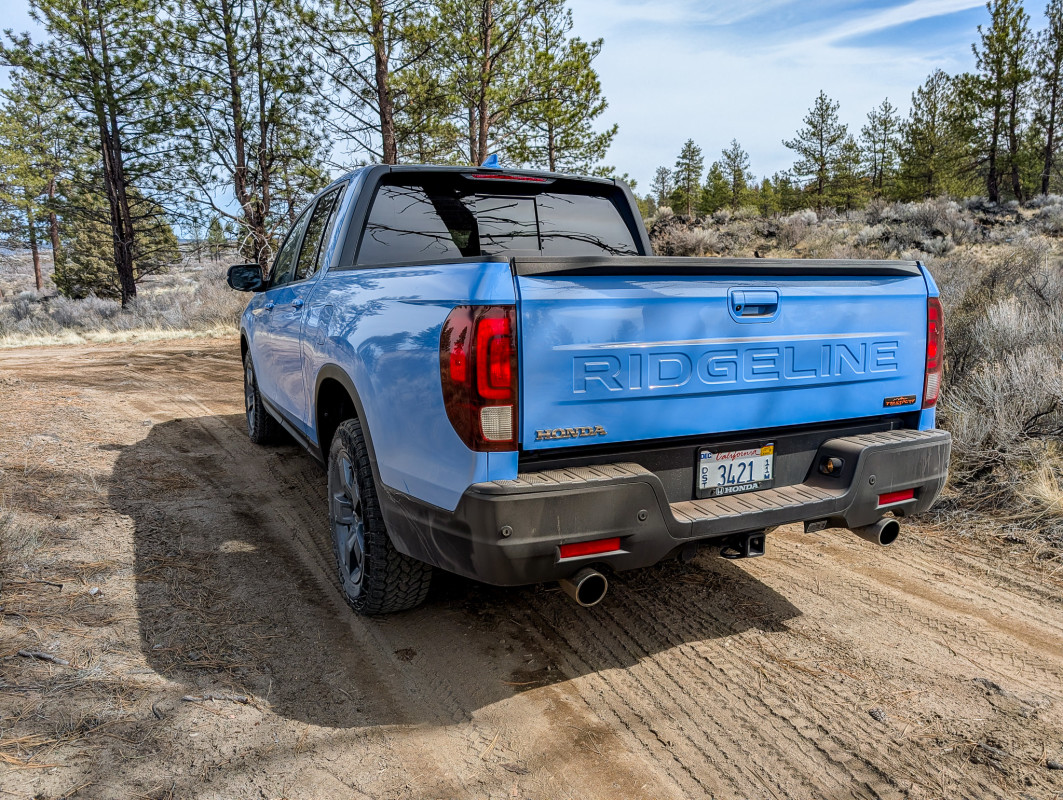
By definition, it’s almost a 'real' truck
If you ask Google, "What's the proper definition of a truck," you'll get a few different answers, but the most common are: it's designed to prioritize hauling goods over people, it has a body-on-frame construction, and has a decent towing capacity (to fit within the whole 'hauling goods' frame). The only criterion the Honda Ridgeline Trailsport doesn't meet is the body-on-frame rule—it's a unibody frame. This is fine for a truck of that size since it can help keep it rigid, reduce overall weight, and improve ride quality.
So, while it’s not as rugged and tough as a Ford F-150 or a Ram 1500, towing 5,000 pounds is a respectable amount for that segment. The Ford Ranger has a towing rating of around 7,500 pounds when properly equipped, and the Toyota Tacoma can tow up to 6,500 pounds under the right conditions. Compared to its competition, it’s right within that sweet spot of being bulky enough to be used for most truck things, but not so tough that it’s a chore to drive.
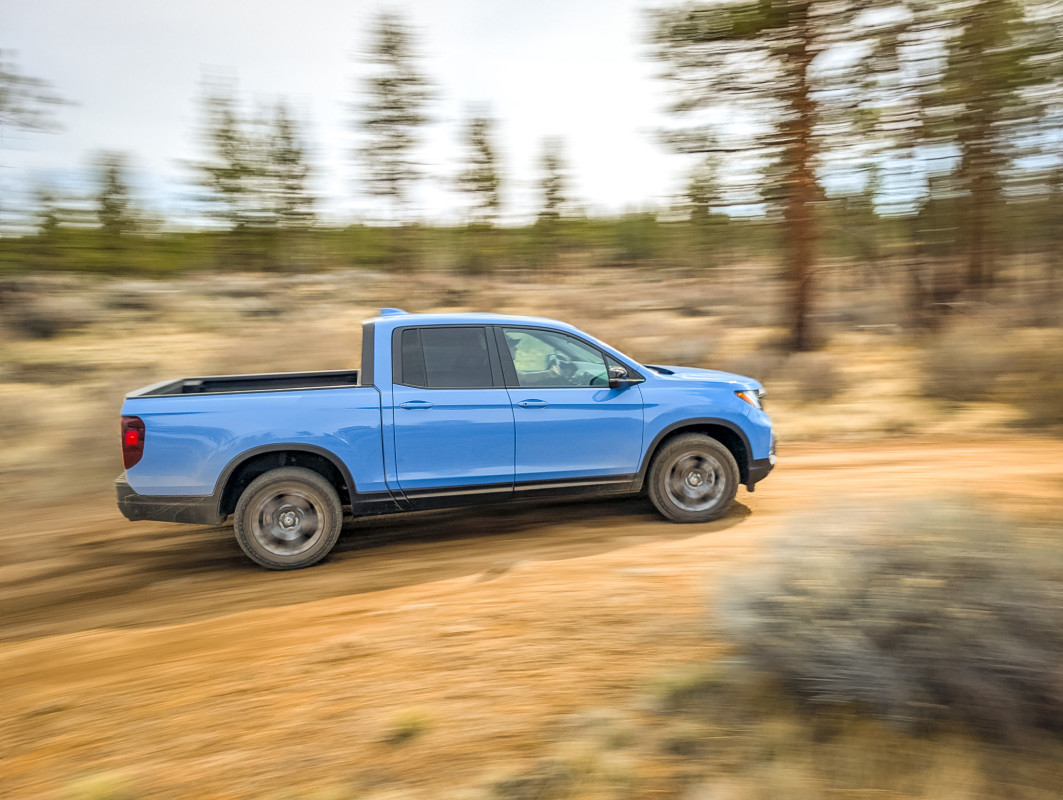
You'd likely assume that the 3.5-liter V6 making 280 horsepower is the same powerplant that’s in the Pilot, but it’s not—it’s the single overhead cam version, which is an older model of that dependable V6. The Pilot has a dual overhead cam engine. The transmission isn’t the same, either. It’s a nine-speed automatic, while the Pilot is a 10-speed, and it’s a tougher automatic. It can be cleverly tuned to be more fuel-efficient in “Eco” mode, it can be more aggressive in “Sport,” and of course, “Towing” helps employ all the torque it needs to tow whatever’s hooked up.
There are a few terrain settings to choose from, too, like Snow, Sand, and Mud, and it’s ready to go thanks to General Grabber A/T truck tires from the factory. It has literally everything to make it as close to a real truck as possible, without sacrificing the niceties of the Pilot SUV, including leather seats, a heated steering wheel, wireless Apple CarPlay/Android Auto, an updated and surprisingly punchy sound system, and heated seats.
The Ridgeline is a good fit for just about anyone, even parents
Since it shares so much Pilot DNA, the Ridgeline TrailSport was pretty cozy, especially from the driver’s seat. The rear seats were a little tight, but both the front and the rear-facing car seats were fairly easy to install. Be aware, though, that securing the upper tether is a bit of a task with front-facing seats. The piece you click the tether onto is actually underneath the seat, and you have to route it behind the backrests to secure it. It took me a while to figure it out (I’ll admit it—I looked it up on YouTube). The rear-facing seat, though, was a piece of cake. Once both seats were installed, getting them in and out of the Ridgeline was a breeze. My youngest loved having the rear sliding window open, too. My oldest, naturally, loved riding up high and waving at everyone through the big windows.
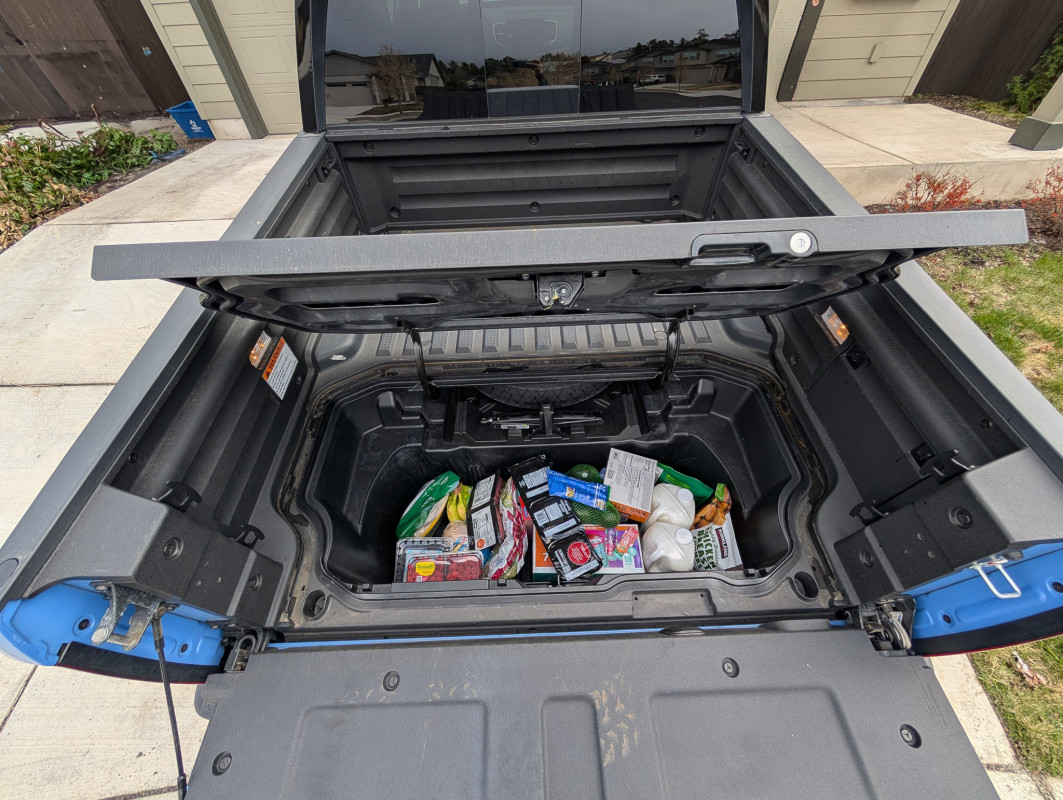
As a parent, I loved all the clever storage bins and cubbyholes, as well as the different ways the truck could be configured. The rear seats can be folded up and out of the way or removed completely to provide more storage space. The center console and glovebox are a lot deeper than you could imagine, making it easy to keep things away from grabby toddlers. My favorite storage compartment, however, was the storage cubby in the bed. The entire week I had it, I used it to keep my groceries in it since my rear seats were occupied by my children’s car seats, and it’s such an underappreciated feature. It was especially comforting to know that if my gallon of milk were to spill, which it wouldn’t, since it’s contained as opposed to sliding around in the bed, there’s a drain plug on the bottom I can open up. If it rains, thick and robust weatherstripping would keep water out, and the all-weather flooring throughout made it easy to clean up after my kids.
If it’s not being used to haul groceries, it could easily be used to store camping gear, and it would be safe there because that compartment can lock. Pictures don’t do it justice, either. It has a volume of 7.3 cubic feet, measuring 43 inches long, 15.5 inches wide at the bottom, and 15.25 inches deep. So, you can store a bunch of stuff in the bed and still have cargo in the storage compartment. Honda says you can even stuff it full of ice and use it as a cooler, thanks to the drain plug. There are bag holders inside it, too, or guides for dividers. If you have trouble opening it once it’s locked, it’s easy to access if you open the bed horizontally instead of vertically.

The bed is quite versatile, too. When I had the Ridgeline, my husband and I used it to haul a few things to the dump. Every time my husband thought, “There should be a tie-down here,” there was one, since there are eight throughout the entire bed. He was impressed by how thoughtfully designed the bed was, and found it incredibly easy to place and secure items in the bed compared to bigger trucks, due to its lower ground clearance and entry point. The anchor points for a camper shell were obvious, and the bed even features a 150-watt/400-watt outlet for tools, electronics, or, if you’re camping, electric grills or lights. Honda offers a plethora of roof or bedtop accessories for your bikes, kayaks, skis, and even rails to stretch across the bed to accommodate a tent. All these features show that the Ridgeline can fit within any lifestyle. No wonder they’re incredibly popular in Bend, Oregon.
It was great off-road, too
The best privilege of living in Central Oregon is how many trails are at my disposal. After a 30-minute jaunt, the TrailSport was off the road and gliding through the region’s silty, light brown sediment. The torque-vectoring AWD system in the Ridgeline TrailSport is responsive and effective, and the all-terrain tires inspired a lot of confidence once the going got tough. While it was off-road, it was also impressively comfortable. My youngest daughter fell asleep on the way to my favorite trail to test cars on, and she wasn’t jostled awake once. Once on the trail, the Ridgeline rode much smoother than I expected. It doesn’t have electronically adjustable suspension, but the TrailSport trim does feature retuned suspension compared to other trims, and it was smooth enough to keep your spine intact, but stiff enough to not translate the knocks and bumps back into the cabin. Both my husband and I enjoyed it.

The Ridgeline has a ground clearance of 7.6 inches, which is moderate compared to its competition. It’s not made for rock crawling or crossing deep water, but it would be excellent for using it the way I did—exploring local trails, or heading to a campsite that’s down a mild dirt or gravel road. It’s not meant to tackle the same trails as a Jeep Wrangler, but I’d definitely put it in the same league as my Subaru Forester, which handled some surprisingly tough trails. The Ridgeline did everything I asked it to, and it proved to be more than capable (and flexible!).
Like other off-road-ready trucks in the segment, the Honda Ridgeline has cameras on the side mirrors, the grille, and the tailgate as part of the Multi-View Camera System (MCVS) that are engaged when you select one of the terrain modes. The newest car I own is from 2011, so I don’t utilize these cameras on a regular basis, and for the Ridgeline, I feel like the only camera needed is for the tailgate. The seating position is high enough to see the corners of the hood, it’s easy to know where your tires are, but the bed’s blind spots are, well, blind. For larger cars like the Jeep Grand Cherokee, the cameras were a must. Not in the Ridgeline. But, it’s nice to know they’re there if you don’t have a spotter.
The price compared to what you get is hard to beat.
As I mentioned before, the Ridgeline Trailsport is priced fairly. It starts at $45,380, which puts it ahead of the competition monetarily. The Toyota Tacoma Trailhunter, for instance, starts close to $56,000 (though the TRD Off-Road is closer to $44,000), the Ford Ranger Lariat starts at just over $47,000, and the Chevy Colorado ZR2 has a price just shy of $50,000. The Jeep Gladiator Rubicon is closer to $56,000. There are more affordable options, like the Hyundai Santa Cruz XRT or the Nissan Frontier PRO-4X, but you don’t get nearly as many features as you do in the Honda.
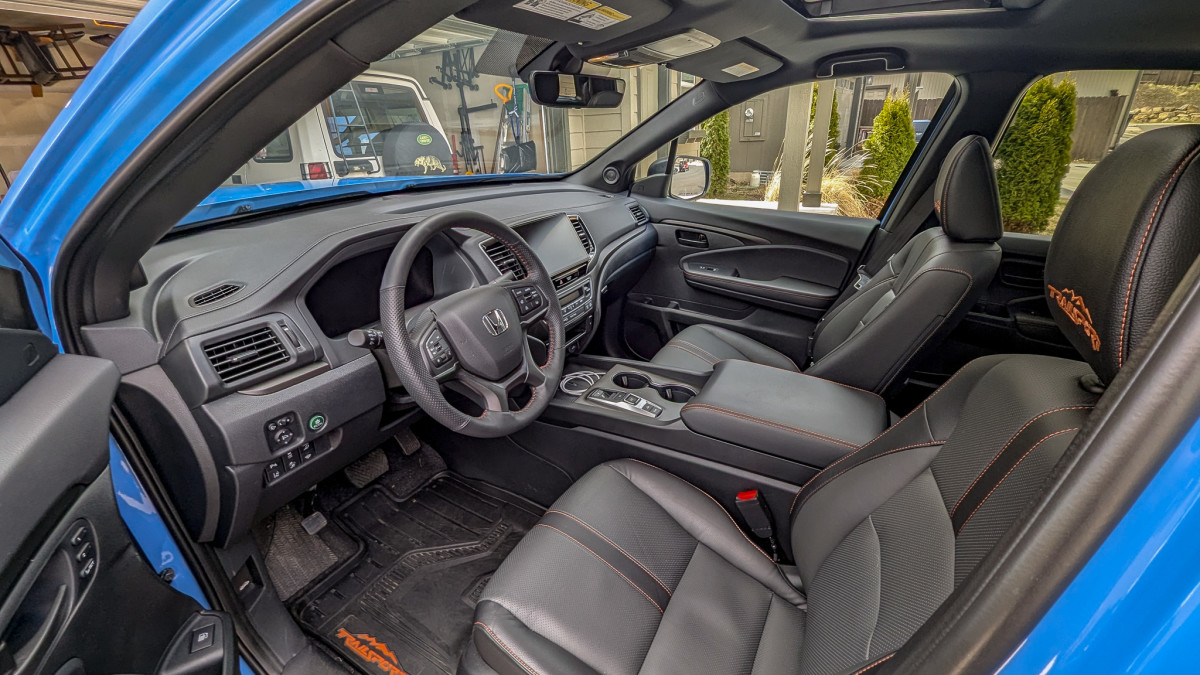
I only had the Ridgeline TrailSport for a week, but every time I thought, “If only the truck had [feature],” the feature showed itself. After using it as both a truck and an SUV, it’s the perfect middle ground between the two categories. You get the comfort and conveniences of an SUV, but the utility and craftiness of a smaller truck. It’s a potent option for those who have truck-ish needs, like hauling bags of feed, flower pots, the occasional run to the dump, Goodwill donations, bikes, camping gear, or for moving. It would be great for hauling a small camper, too, since most people don’t usually haul more than 3,500 pounds, even with “real” trucks.
Final thoughts
As someone who actively participated in Honda Ridgeline slander in my youth, I learned that there is so much more to the Ridgeline than what meets the eye. It’s an incredibly versatile, willing, clever, and capable little truck. It’s not going to move mountains for you, but it’ll get you there and back without any hiccups, and carry all of your gear and passengers comfortably. My husband, who has never ridden in a Honda Ridgeline before, noted that it’s a great gateway drug to the world of trucks. The Ridgeline is the perfect way to dip your toes into the truck world, and once you’re comfortable enough to swim, you can upgrade to the F-150 or Ram 1500. It’s best for those “truck curious,” if you will. Or for those who like SUVs and want a truck, but don’t want a truck that feels too big or intimidating. rides like a truck.
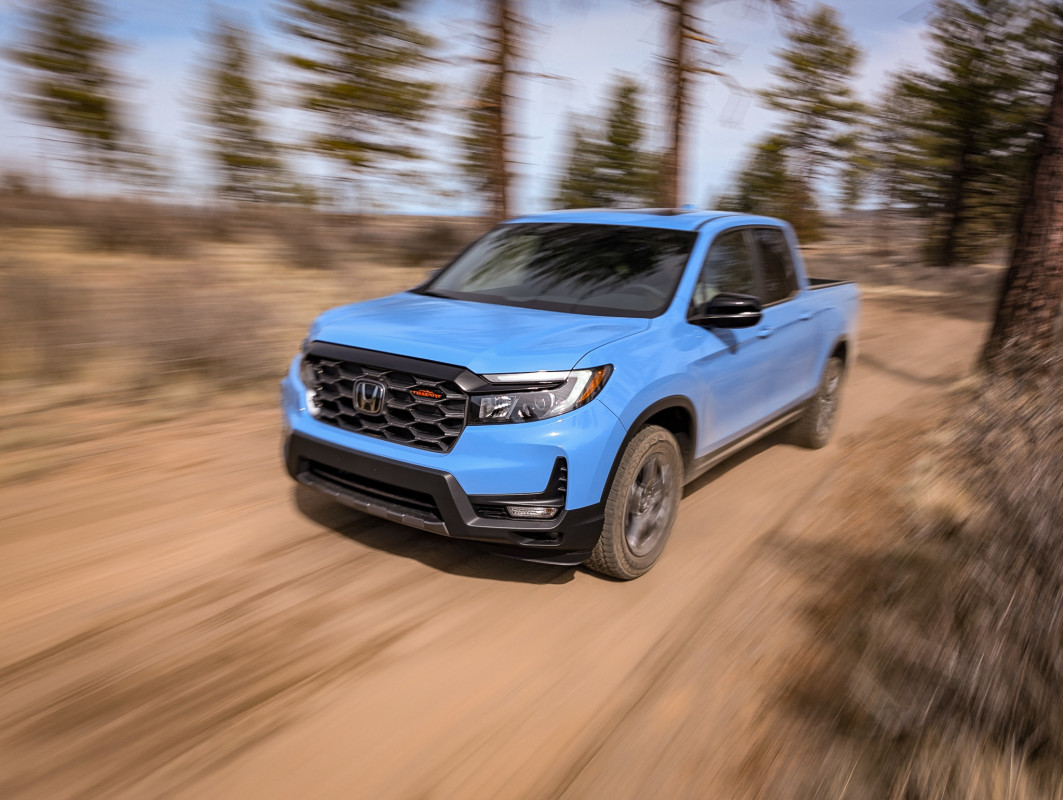
As parents who consider ourselves very outdoorsy people, we both gave the Ridgeline a fat thumbs up. When it’s time to replace my Forester with something a little more useful, we’ll be seriously considering making the switch to Honda for the Ridgeline, especially when it gets a hybrid powertrain. Since the Pilot is due for hybridization, we’re sure the Ridgeline will be partially electrified, too.


0 Komentar